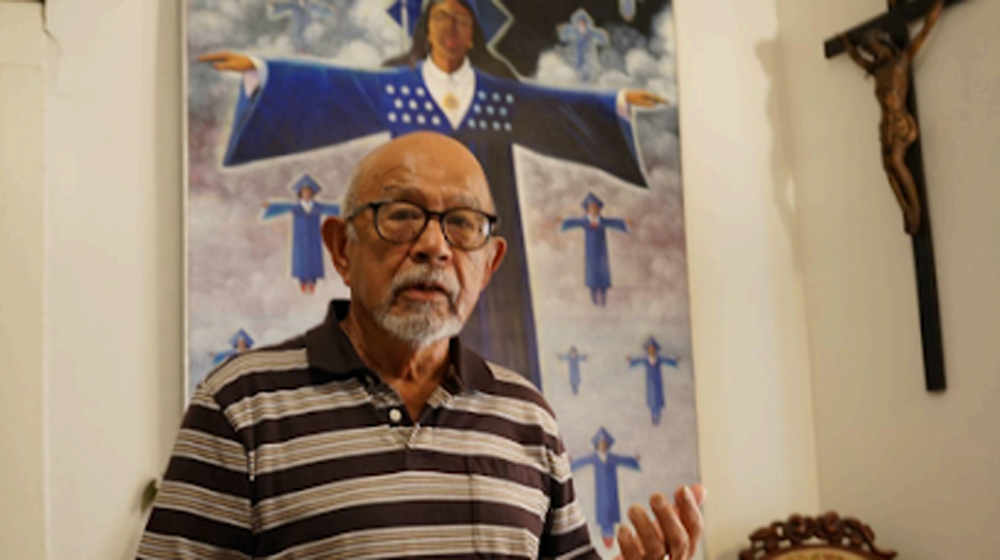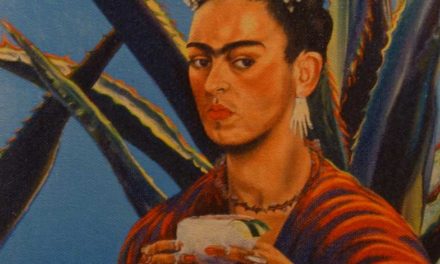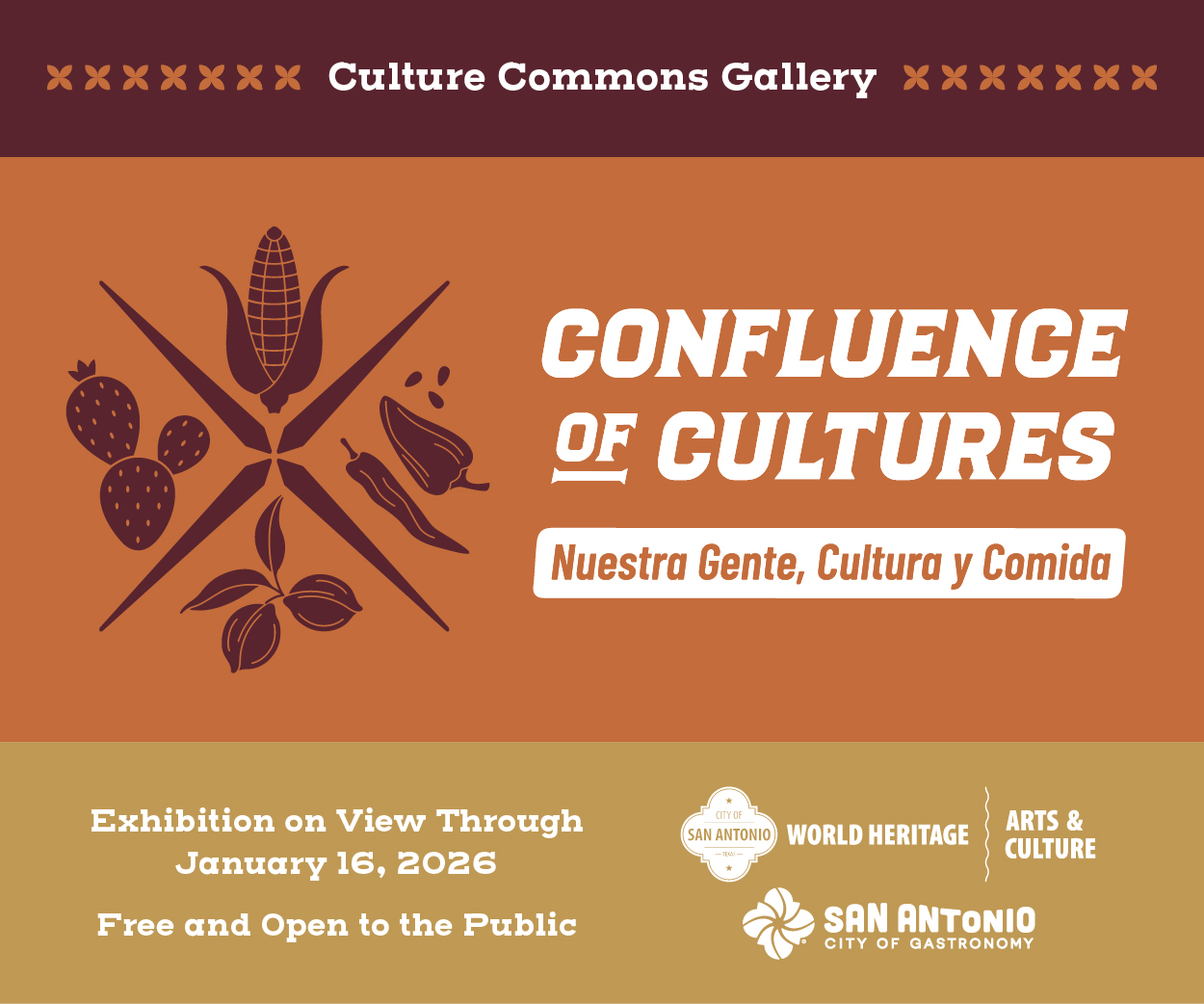The Xicanx: Dreamers-Changemakers exhibit opened at the San Antonio Contemporary at Blue Star this month featuring thirty-three Latino artists. San Antonio accounts for fifteen artists, nearly half of the total. Organizers Greta de Leon and Jill Baird explained that the exhibition “uses the term Xicanx to refer to Chicanos, Chicanas, and Chicanx. The term, the organizers noted, “reflects those who fought for and claim this designation, and incorporates the ‘X’ from the Spanish transcription of the Nahuatl sound, ‘Ch.’”
The Museum of Anthropology at the University of British Columbia in Vancouver, Canada organized the exhibit in 2022. The Lead curators, De Leon and Baird, selected artists who shared a “tradition of combining visual art and activism.” Several artists featured in my essay, including Jose Esquivel and Judy Baca, began their work “as part of El Movimiento, the Chicano civil rights movement of the 1960s and 1970s.” The other two artists I feature here, Raul Servin and Carlos Fresquez, draw on the traditions of their Indigenous roots from Mexico and Aztlan [the ancestral territory of the Aztec people north of the Rio Grande].
Jose Esquivel
One of the oldest artists in the show, Jose Esquivel, who passed away in 2022 at age 88, represents the first generation of Xicanx artists in the United States. Esquivel grew up in San Antonio’s Westside and studied commercial art at San Antonio Technical and Vocational High School in the early 1950s.
Esquivel worked as a commercial artist and met weekly with fellow Latino/Xicanx artists, several of whom he met in high school. The group debated what kind of art represented La Causa and how best to make their purpose and ideas known. In 1971 these artists formed an
art association called Con Safo. San Antonio art professor Mel Casas wrote a “Brown Paper Report” discussing arguments they presented about the meaning and direction of Chicano art.
Tomas Rivera, a pioneering writer of Chicano literature, assisted the Con Safo art group with an exhibition that he arranged to travel to several cities of the Midwest in 1972. That year, several Con Safo members also participated in an art exhibit at Trinity University honoring Cesar Chavez. The Midwest and Chavez exhibitions represent some of the earliest efforts in the United States to showcase the emerging work of Chicano artists.
Esquivel left the Con Safo group in 1974 and drifted away from what he called political art. For a time, he painted Texana art. In his artist statement, Esquivel wrote: “My paintings are barrio scenes that are reminders or memories of familiar places. The symbolism depicts some of our cultural beliefs and the conditions and struggles of a segment of people in our society.”
Judy Baca
Judy Baca is among the best-known artists in the Bluestar Xicanx exhibit. Baca also represents the first generation of Chicana artists. Born in South Central Los Angeles after WWII, Baca grew up in the San Fernando Valley.
In 1974, Baca founded the City of Los Angeles’s first mural program that produced over 400 murals and employed thousands of local participants.
Her big break came when she established the Social and Public Arts Resource Center (SPARC) and began work on The Great Wall of Los Angeles in 1975. The Great Wall project emerged when the U.S. Corp of Engineers contracted SPARC to paint the long cement wall of the
Tujunga Flood Control Channel. Baca had both great ambition and vision, and over the next twenty-five years, with the assistance of over 400 volunteers and seasoned artists, SPARC completed more than a half-mile or 2,754 feet of murals.
In determining the themes and images for The Great Wall, Baca consulted historians and community leaders. In the initial phase of the mural, artists painted the history of California from the Indigenous period to the 1950s. One of the panels in the Contemporary exhibit depicts Los Angeles policemen forcibly removing residents from their neighborhood Chavez Ravine to make way for a new Dodger’s Stadium.
The Contemporary at Blue Star exhibit includes an impressive video projection of Chicano murals throughout the U.S. featuring many of Baca’s murals. Baca told Sam Levin of The Guardian, “Murals can do some amazing work in the world because they live in the places where people live and work because they can be made in relationship to the people who see them, [and[ because the people themselves can have input if it’s done in a
profound way. And that’s what I intend to keep doing as long as I’m standing here on earth.” [Jan. 22, 202]
Raul Servin
Raul Servin grew up in a small rural community in the Mexican state of Guerrero near Acapulco on the Pacific coast. At age seven, Servin’s parents moved to Acapulco, and the young boy enrolled in art classes offered through the Mexican government’s Instituto Nacional Bellas Artes. Servin excelled in the fine arts program and at sixteen began exhibiting his artwork. He also enrolled in Pre-Colombian art classes and taught as an art instructor at a local junior high school.
Servin’s first artistic career break came in the late 1960s when he landed a job in Acapulco painting the performance stage for the Voladores de Papantla [Known outside of Mexico as the Flying Indians]. In the Spring of 1968, Servin traveled with the Acapulco company to San Antonio to decorate the Voladores stage at HemisFair68. After completing his paintings for HemisFair68, he made San Antonio his home.
In the 1980s, Servin enrolled in art classes at San Antonio Community College. He credits art professors Felipe Reyes and Mel Casas for giving him important insights about the Chicano struggle in Texas and beyond. These insights led him to paint as a social and political activist.
In his artist statement, Servin notes that his work “is self-defined by the principles of reality, identity, pride, struggle, pain, and destiny.” In The Contemporary exhibit, Servin expresses his opposition to Texas Senate Bill 4 which prohibited “sanctuary cities” and related regressive immigration policies. His painting depicts a family of four with a mother holding a baby standing with the American flag as a backdrop. The figures are skeleton [esqueleto figures] similar to those of the great Mexican painter, Jose Posada. For the past forty years, Servin has been a major contributor to the Mexican and Chicano art community of San Antonio.
Carlos Fresquez
At a young age, Carlos Fresquez, a Denver, Colorado native, informed his parents that he wanted to be an artist. Art historian Tatiana Reinoza noted that Fresquez’s early work was “inspired by the Chicano movement of the l960s and used the punk movement and pop culture to blend visual and cultural elements to create pieces that force the viewer to reevaluate their understanding of the human condition.”
Fresquez told Laura Thompson of the Denver Art Museum: “I grew up in the late 1960s and early 1970s. I have been inspired by cartoon comic books and psychedelic posters. Also, my color interest comes from Latin-American folk art.”
Immigration is one of the many topics that captured the attention of Fresquez. In the Xicanz exhibit, he created a U.S. wall map showing the many locations where immigrants live and work. His major piece in the exhibit consists of numerous landscapes across the U.S. where the artist has placed his famed image of an immigrant family on the run. He found the landscapes in flea markets and antique stores and inserted his popular portrayal of immigrants– Fresquez placed the word CAUTION on the top of one depiction with the explanation:
“Immigrant Crossing, California sign. The last one disappeared in 2018.”
Fresquez describes his artistic creation as organic and explains: “I will sometimes decide to make a work that comments on a current event or a social issue. I then look at it from many angles and strive to make works that will either sucker punch you or make you think or laugh.”
Many other talented prominent and emerging artists are included in this exhibit which remains at the Contemporary at Blue Star until October 6, 2024.
The Contemporary at Blue Star Exhibit Xicanx: Dreamers-Changemakers Highlights Latino Artists







